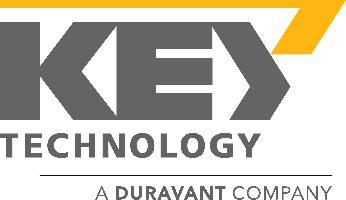The Duravant family of operating companies serve the food processing, packaging and material handling segments.
Chemical Bagging Case Study: CRI Catalyst Company
01/20/2017
CRI Catalyst Company (CRICC) is part of CRI/Criterion Inc., the global catalyst technology company of the Shell Group. CRICC is dedicated to providing a broad customer base with effective and cost-efficient catalysts and technologies. The catalysts are manufactured on a ceramic carrier and impregnated with precious metals before being delivered to their customers worldwide.
In 2014, CRICC contacted nVenia’s HAMER team about replacing their older vertical form-fill and seal bagging system. After completing an in-depth evaluation process, CRICC purchased a fully automated open mouth bagging line. The equipment included a net weigh scale, a 3560 Bag Pro automated bagging system, a HAS 300 hot air sealer and a robotic palletizer.
The CRICC team had three important objectives to be achieved with the purchase of the new automated bagging system: 1) increase fill accuracy; 2) improve dust collection to facilitate a cleaner, safer workplace and 3) produce a completely sealed polyethylene non-vented bag that could easily be palletized and shipped to customers around the globe.
Through the team’s collaborative efforts, all three of these important objectives were achieved.
ACCURACY
Due to the intrinsically high value of the catalysts, CRICC needed a bagging system that would consistently achieve high accuracies of +/- 3 to 4/100ths of one pound on 50-pound weights. While the CRICC production rates would normally require a simplex scale, a duplex scale was chosen to allow more scale processing time, ensuring extremely high bag weight accuracy.
DUST COLLECTION
The ceramic carrier pieces are impregnated with a precious metal catalyst. Due to the high value of these metals and the desire to minimize dust in the workplace, dust reclamation was a critical requirement. The HAMER dust collection capture points inside the scale housing and at the bag fill spout (full bag top hooding) were critical elements in achieving this objective. This included providing air extraction hooding over the bag air evacuation section of the line; in addition to an air wash system which cleans dust from the bag inlet prior to sealing on the hot air bag sealer.
AIR EVACUATION
The catalysts are packaged in a polyethylene bag that must be fully sealed without air exhaust holes. Since this product is shipped worldwide, CRICC needed to ensure that sealed bags had minimal trapped air after being sealed. This facilitates consistent bag palletizing and ensures that bags on the bottom of a full pallet will not break during transit. To accomplish this requirement, we developed a simple method of extracting air from the filled bag as they exit the automated bagger.
In addition to cost control on their high value product, CRI’s packaging line has seen numerous benefits. The feedback we have received from the customer indicates that the system has reduced the labor required to package an order by about 50%, and has substantially reduced operator exposure to dust.









